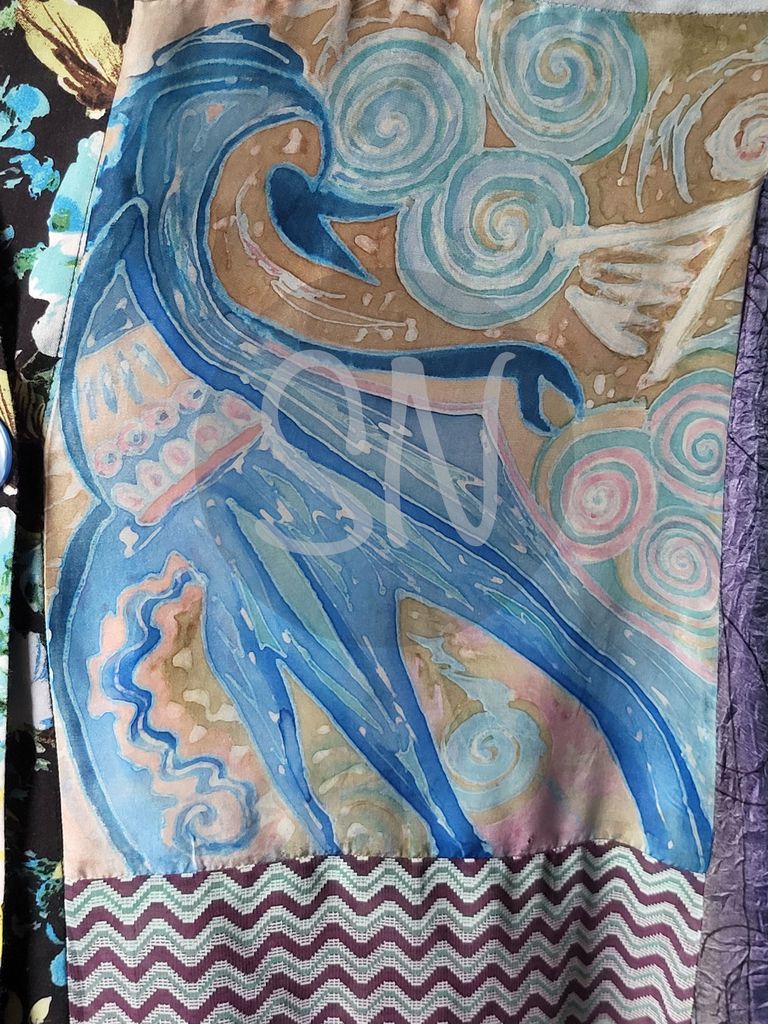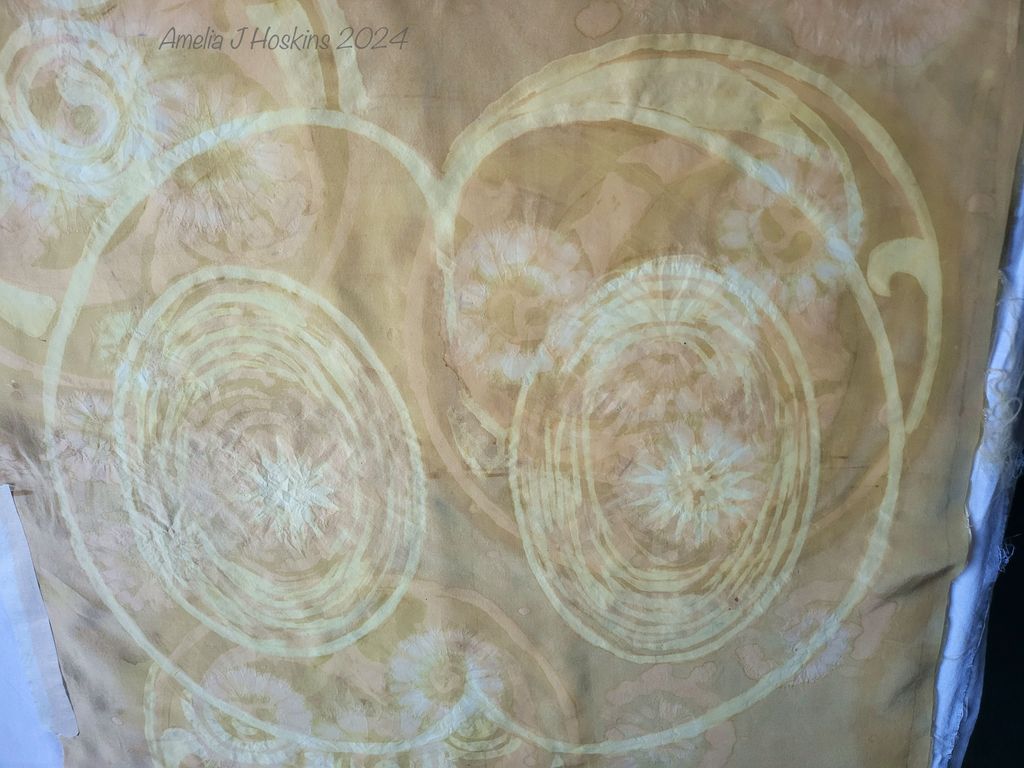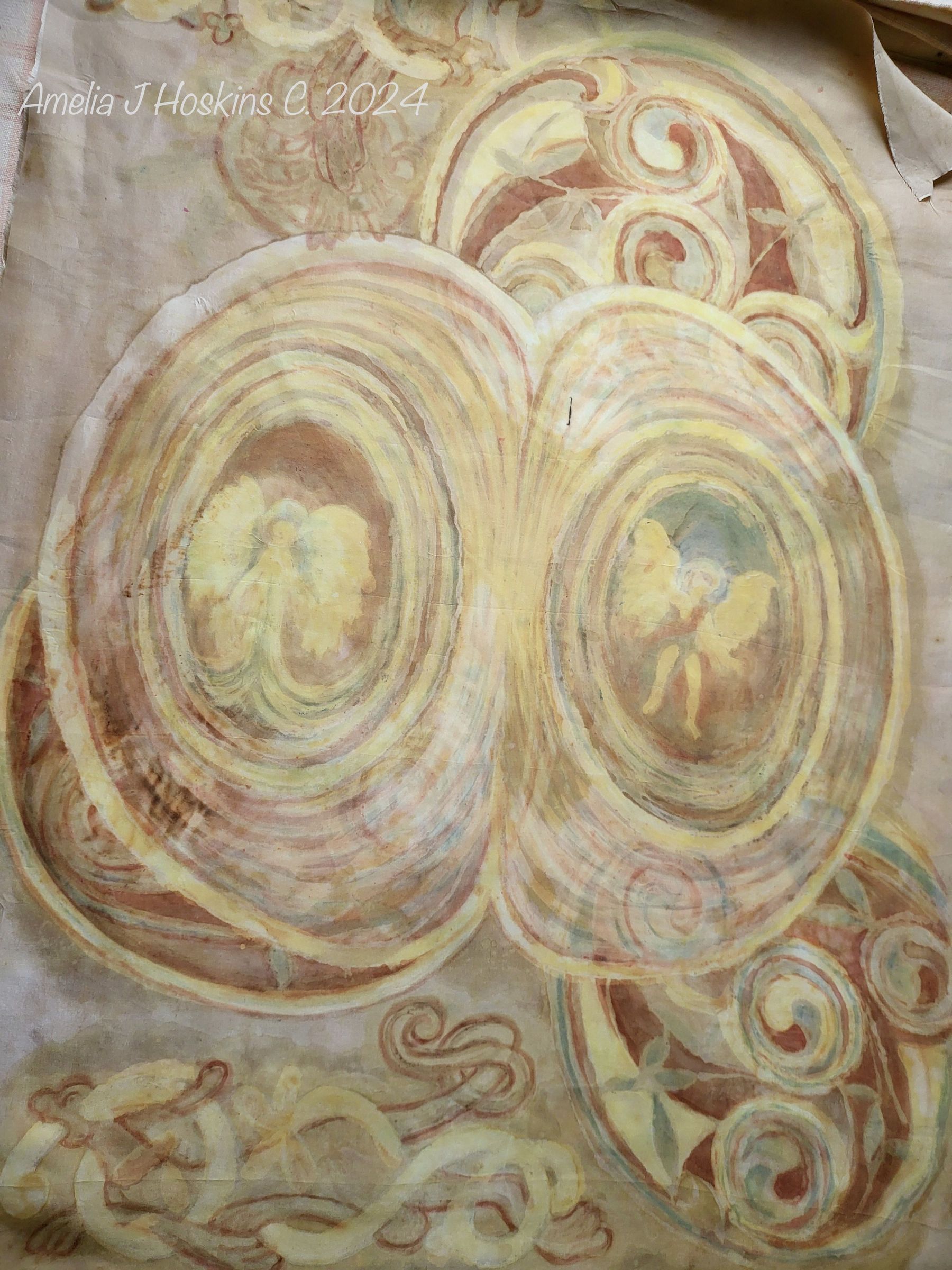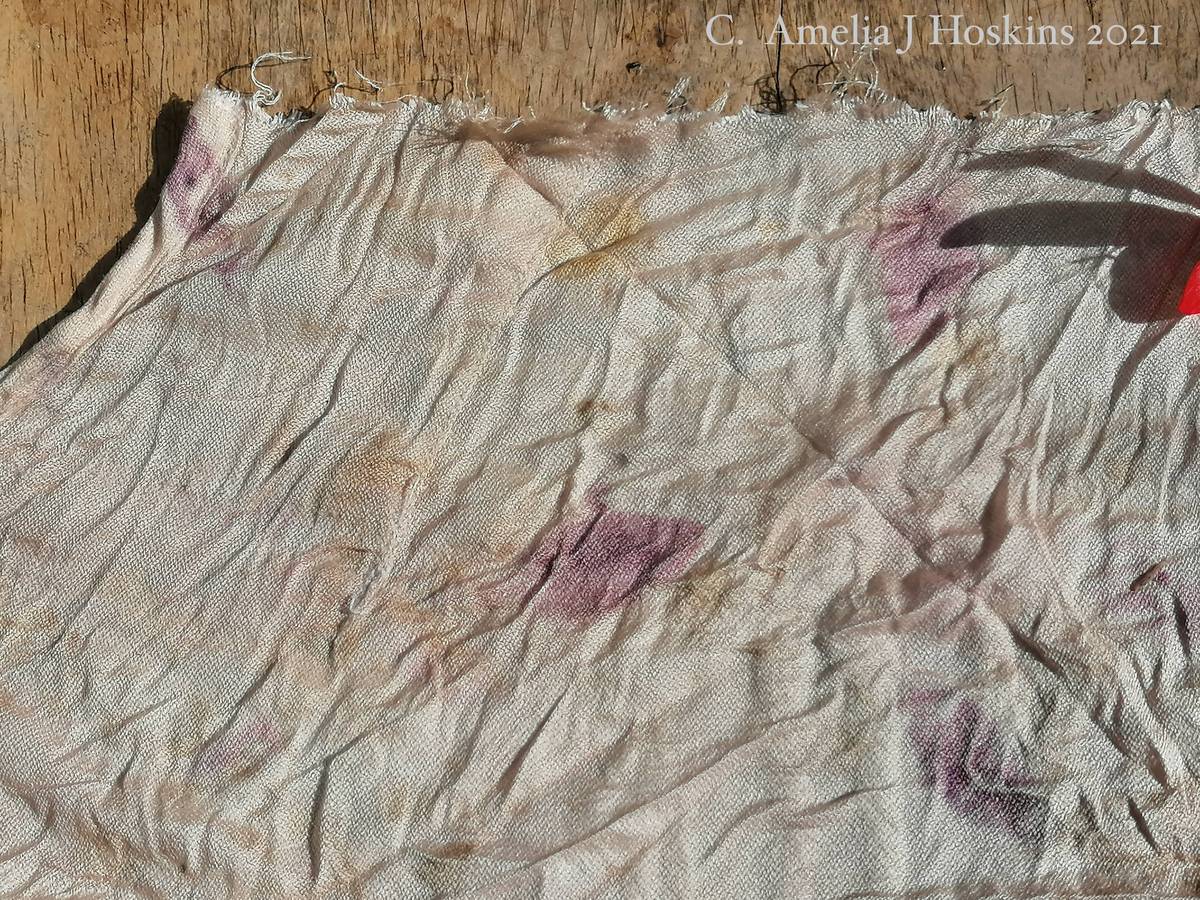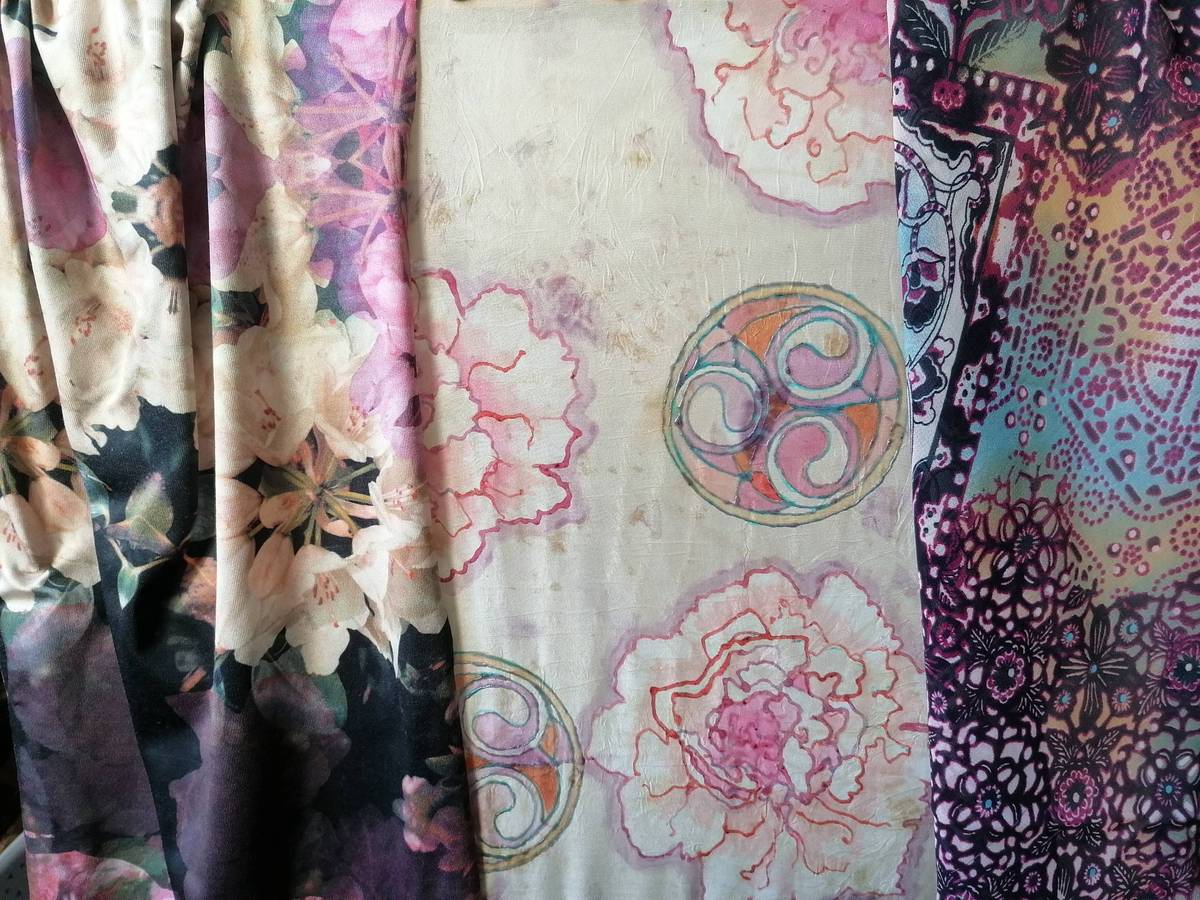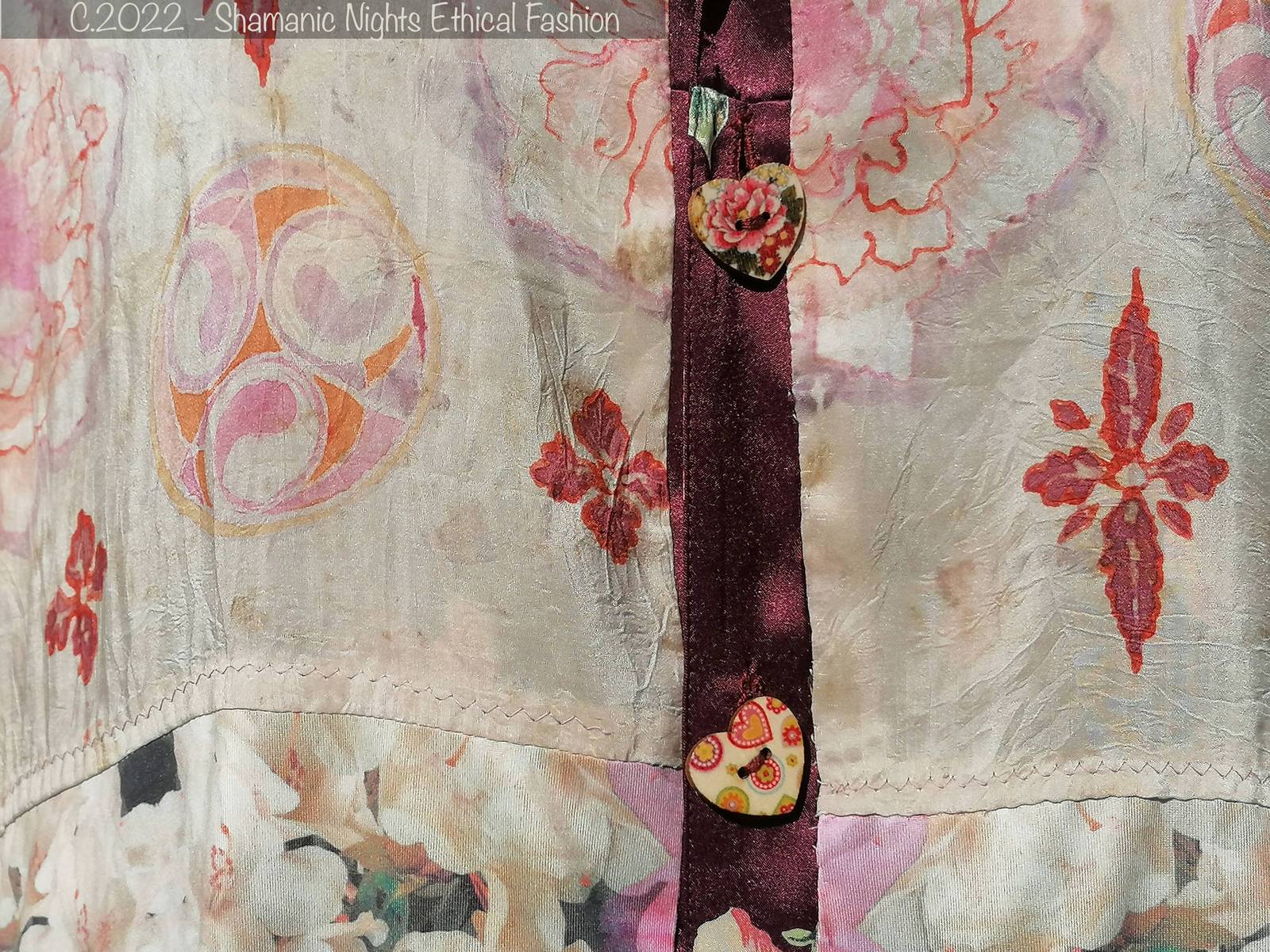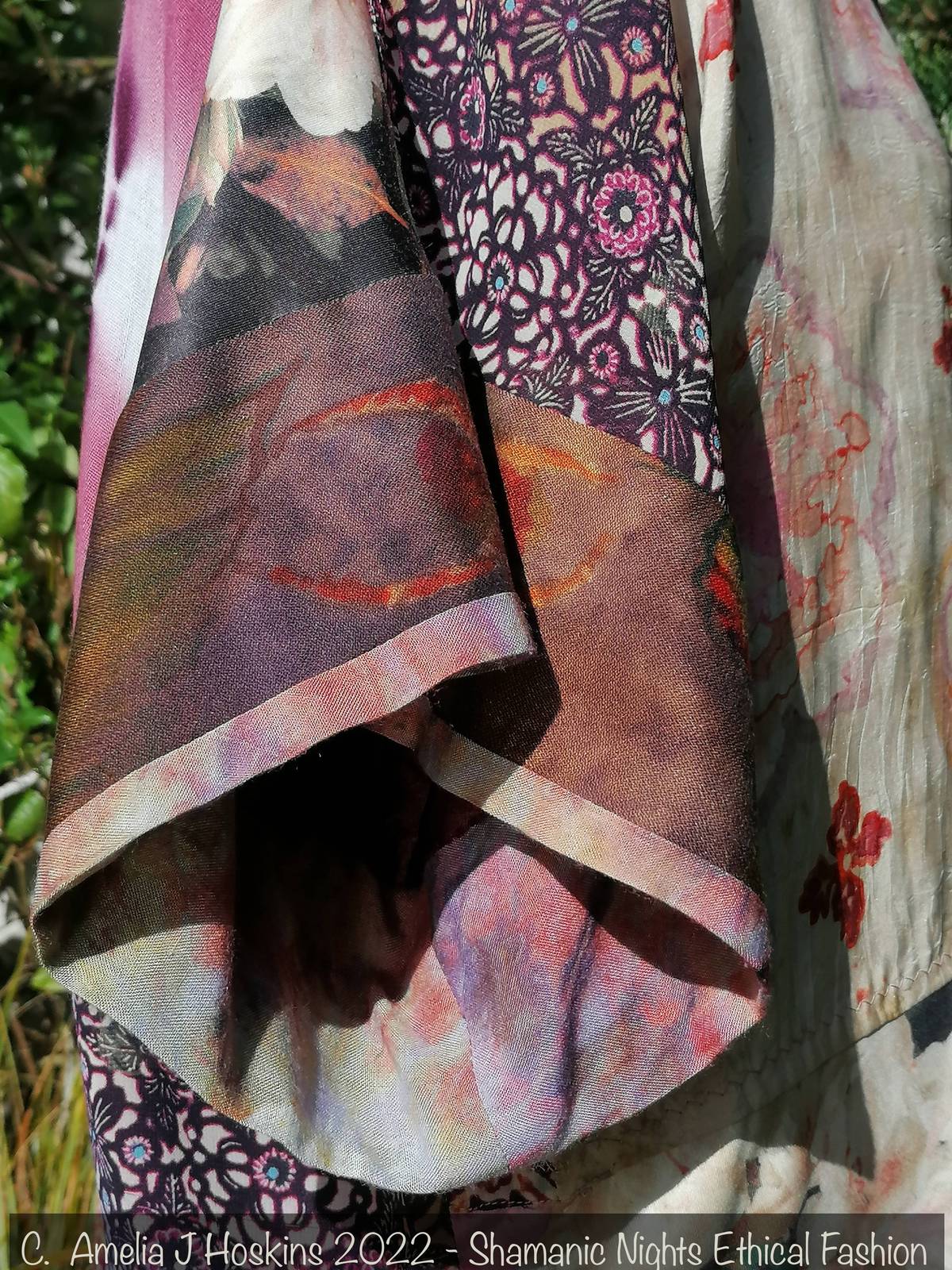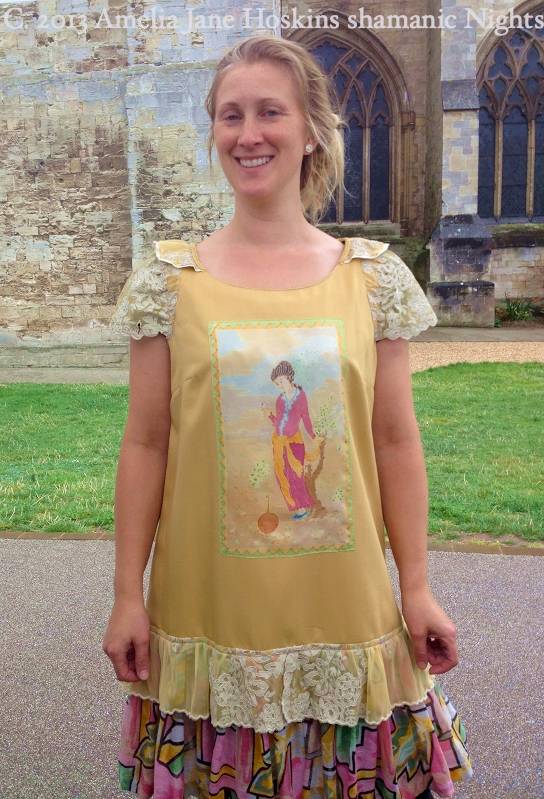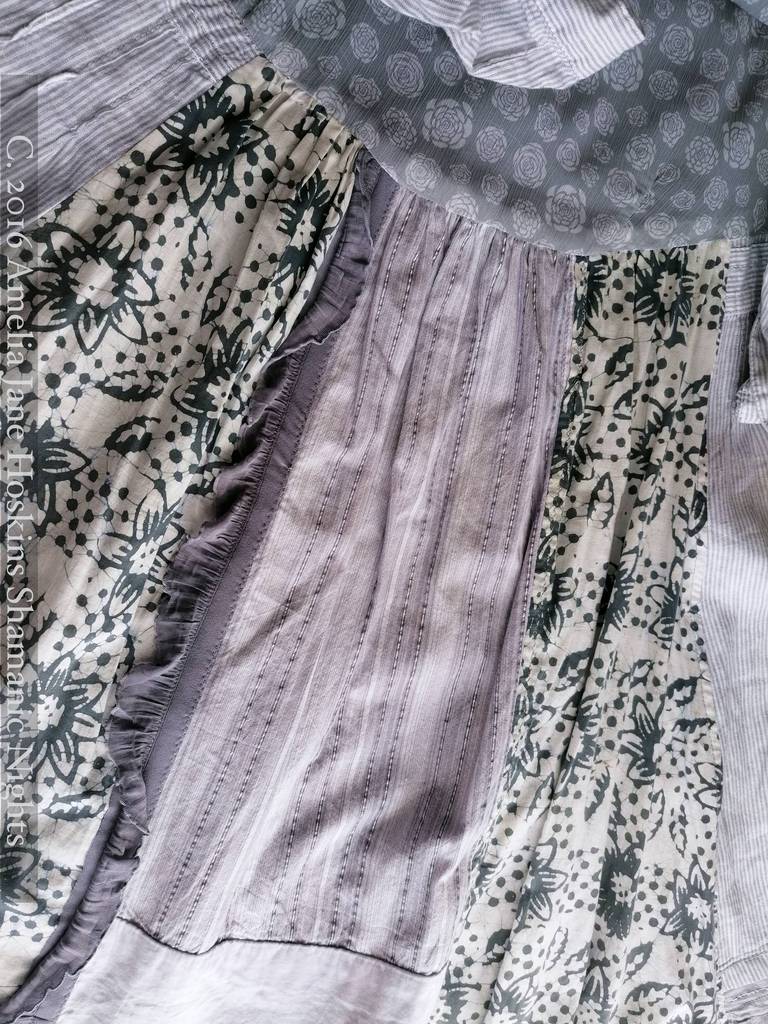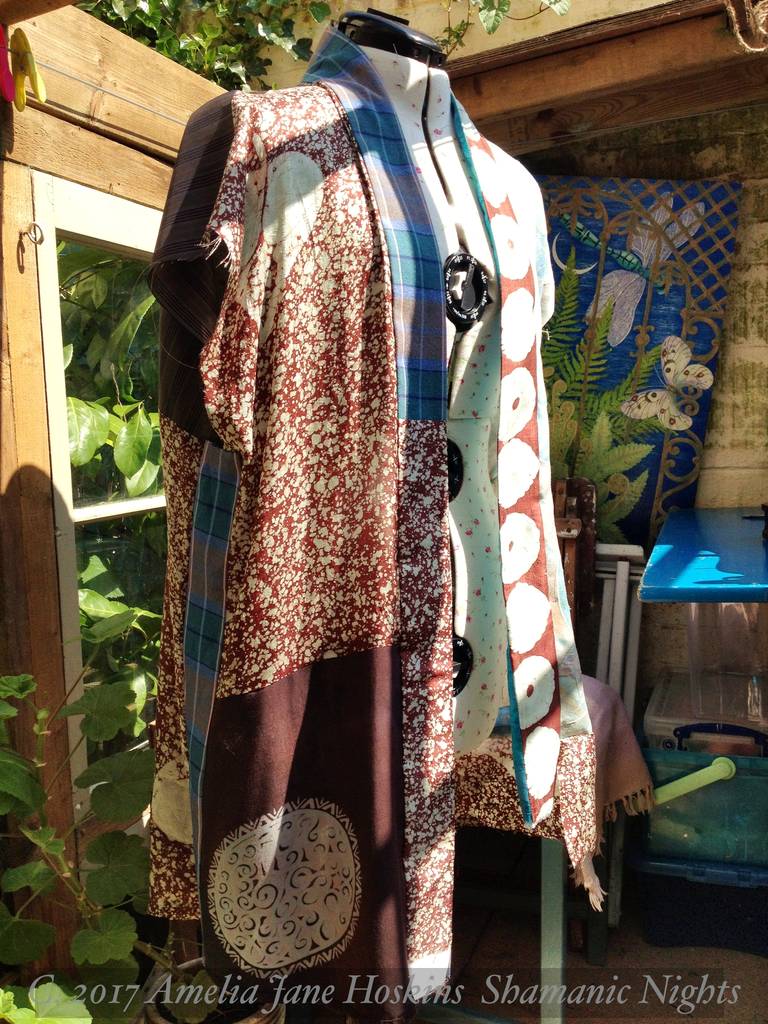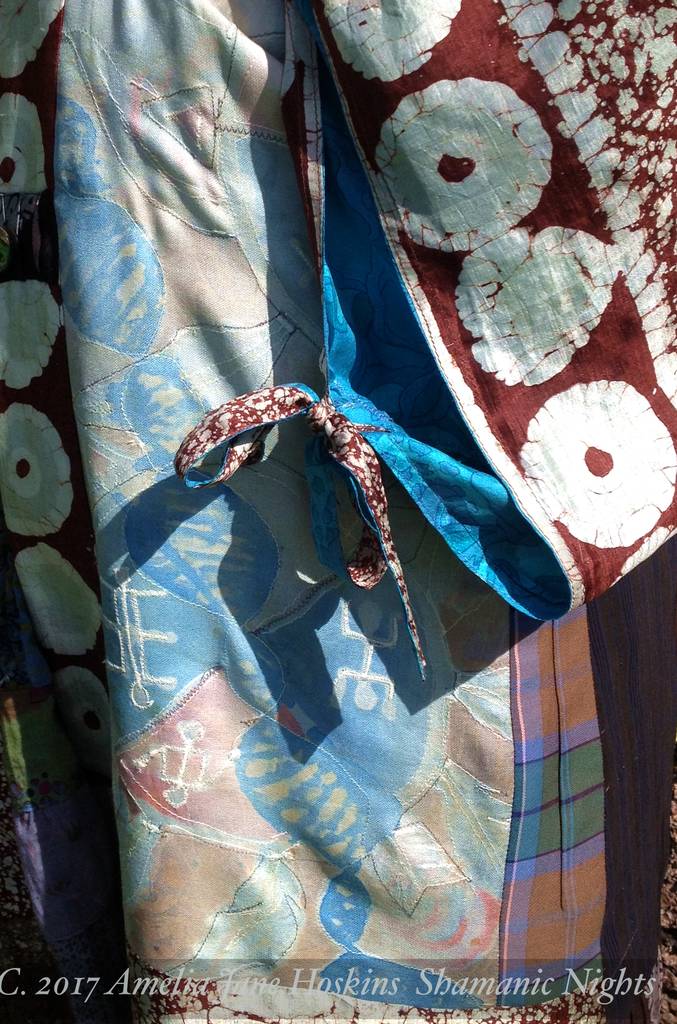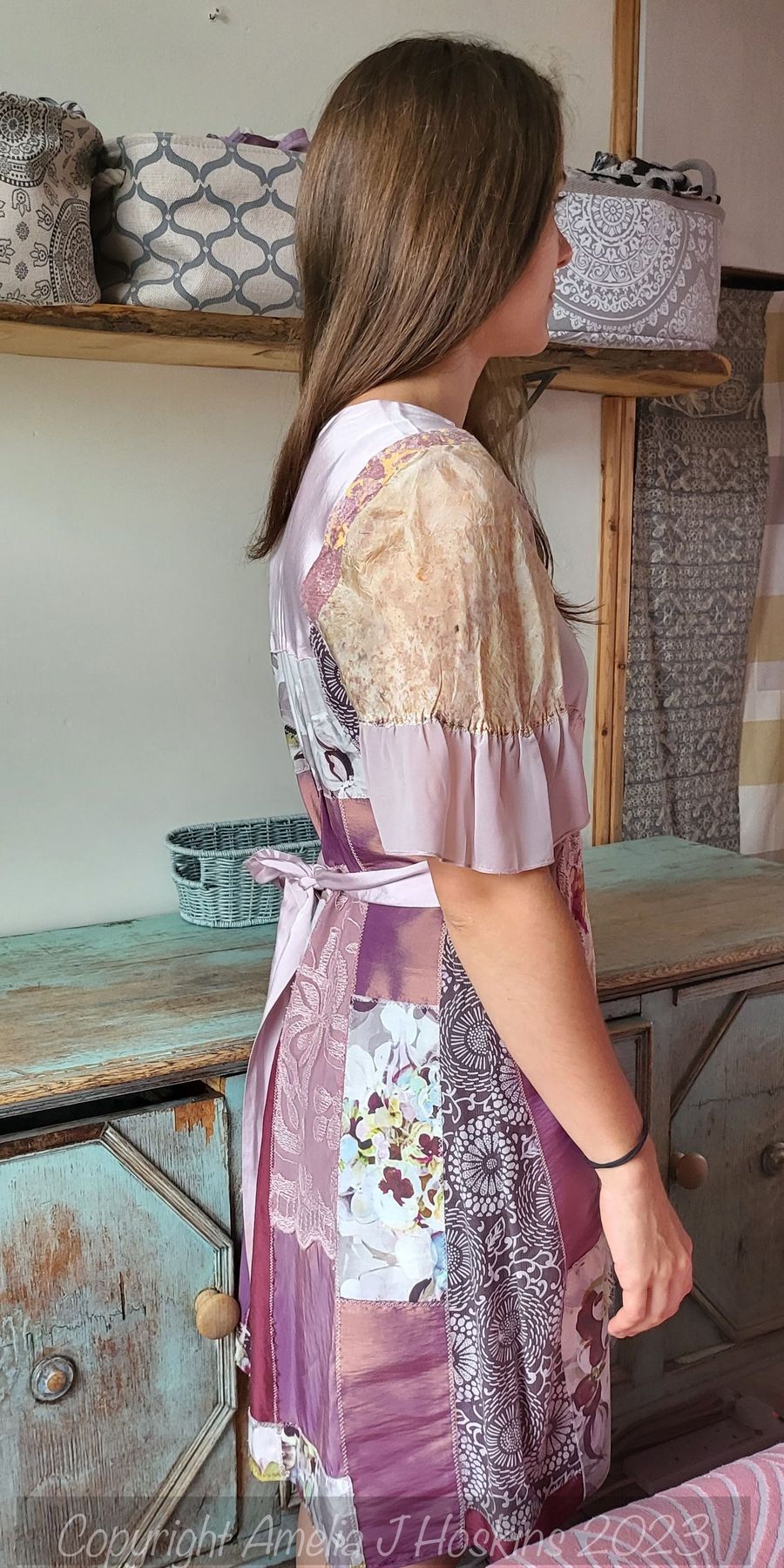03
Feb
Bluebird Kimono
BLUEBIRD - Modelled by Giorgia, Theatre director, visiting guest. Relaxing with simple one front button.
BLUEBIRD Kimono dress uses totally unique combination of nicely hanging fabrics: silk, polyester, polyester voile and viscose, for easy leisure wear, as dressing gown, event dress, or beach dress. Front welt edge which forms kimono styled collar is part of the lining as a floral black/blue/yellow viscose shirt was used as a base to build the garment on. Lining garment was extended with black fabric with turquoise flowers seen where extended to front to form 'hem'.
SILK PAINTING : Front middle panels on left and right sides. The silk painting was originally done independently, then blue coordinates were chosen from materials stock recently to create this garment.
Inspirations from Hopi Pottery of birds and seeds, from which I amalgamated an abstracted design. The blue bird-like image was from a stylised maize shooting from seed. Hopi designs of birds and seeds had similarities of stylisation.
Loose all-size fit. Three quarter length sleeves below elbow. Up to 41inch bust. (105cm) Back length 36.5 inches (92 cms). No pockets.
BLUEBIRD available £175.00 : Available to buy on Shamanic Nights FOLKSY Shop Celtic Rose.
Price reflects original silk painting and full viscose lining.

